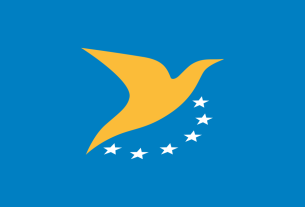COLOGNE, December 12, 2023 – Air taxi noise must respect defined standards and limits to ensure that disturbance to the public is minimised, and to foster citizens’ acceptance of air taxi operations in or near populated areas, the European Union Aviation Safety Agency (EASA) said.
The Agency confirmed its leading role in setting noise standards for Urban Air Mobility services with two further publications setting limits on noise emitted by different designs of air taxis.
“EASA conducted a large-scale study in 2021, in which noise was clearly highlighted as one of the top societal concerns for this new mode of urban transport in the European Union,” said EASA Acting Executive Director Luc Tytgat. “The Agency takes these concerns seriously. The standards we are setting reflect the public’s desire for minimising noise disturbance from Urban Air Mobility.”
EASA published two sets of Environmental Protection Technical Specifications (EPTS) for aircraft capable of Vertical Take-off and Landing (VTOL), the technical description of the aircraft that will provide air taxi services and other similar services. The aim is to reach a high, uniform level of environmental protection and to prevent significant harmful effects of noise on human health in the European Union, as mandated by the EASA Basic Regulation.
Both documents build on existing international noise standards for conventional aircraft, adjusted to accommodate the characteristics of VTOL-capable (VCA) aircraft. In addition to measuring noise at approach, take-off and overflight (ATOO), they also contain a hover noise assessment to help evaluate the noise impact of operations close to vertiports, the ground facilities from which such aircraft will operate.
The first EPTS document is the final version of the text applicable to VCA powered by non-tilting rotors. It expands on the public consultation phase, and takes account of around 200 comments from VCA manufacturers, academia, and national aviation authorities, making technical changes to bring simplification and clarity. A typical design falling under this scope would be the VC2-1 “VoloCity” from Volocopter.
The second EPTS document applies to VCA powered by tilting rotors and is published for consultation. Although similar in content, the standards in this document were based on the legacy international noise standards for tilt rotors. The Lilium Jet model would fall under the applicability of this EPTS document.
The maximum allowable noise levels in ATOO phases are identical in both EPTS to ensure a level playing field among VCA designs.
The document is open to public consultation until February 13, 2024. Comments can be submitted through the Comment Response Tool (CRT).



